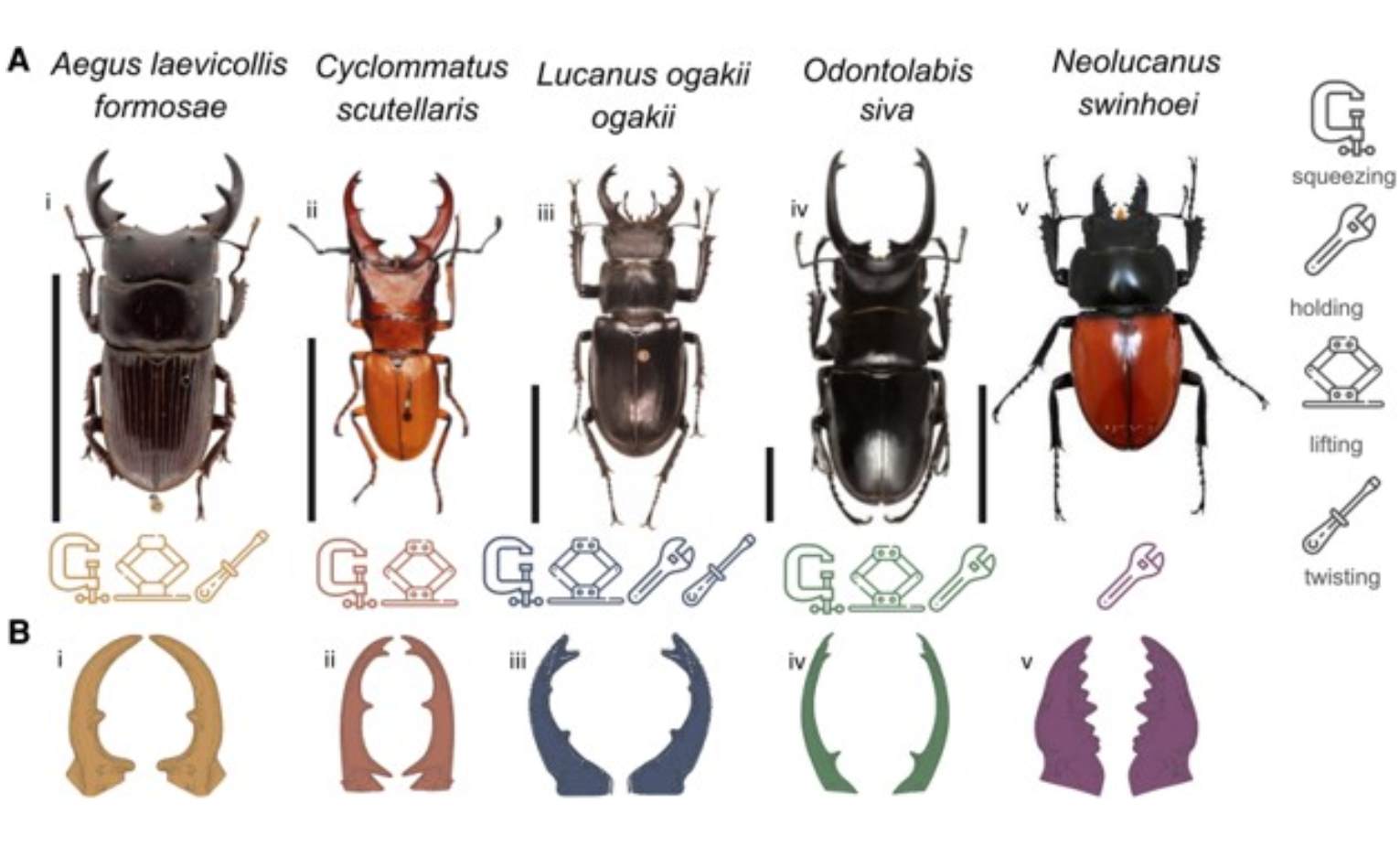Stag beetle mandibles exhibit remarkable interspecific variation, reflecting adaptations for species-specific combat strategies. This study investigates the functional basis of this diversity by analyzing the mandibles of five species using high-resolution finite-element analysis and geometric morphometrics. We simulated four distinct combat maneuvers—squeezing, holding, lifting, and twisting—and quantified mechanical performance via stress and strain energy, under standardized conditions. Principal component analysis of mandible morphology revealed two major axes of variation linked to shape and tip complexity. Our results show that certain mandible designs exhibit superior mechanical efficiency in maneuvers typical of their known fighting behavior, particularly in squeezing and twisting, suggesting functional specialization. However, mismatches also emerged, indicating latent mechanical capabilities or limitations in behavioral data. An exploratory correlation analysis highlights links between tip complexity (principal component 2) and biomechanical performance. Lifting performance was almost consistent across species, suggesting that whole-body kinematics may dominate this action. This work offers new insights into the evolution of animal weaponry by demonstrating that mandible shape in stag beetles is often aligned with species-typical combat strategies but not strictly constrained by observed behavior. It further provides a quantitative framework for linking morphology and mechanical performance in biomechanically complex systems.
Read article
